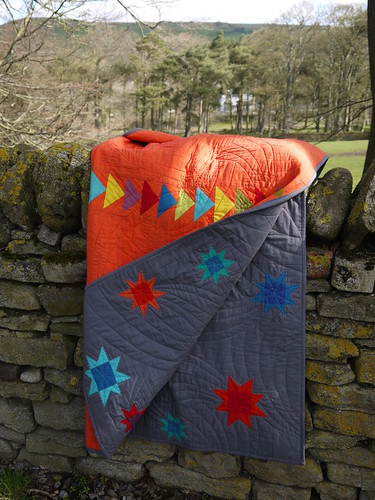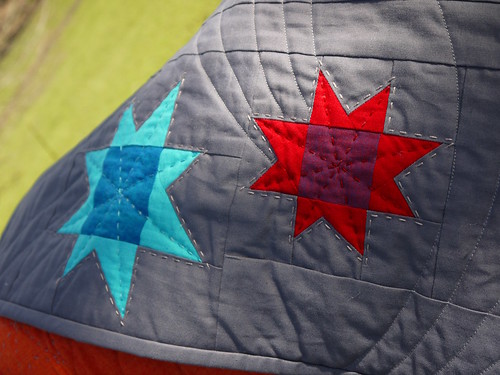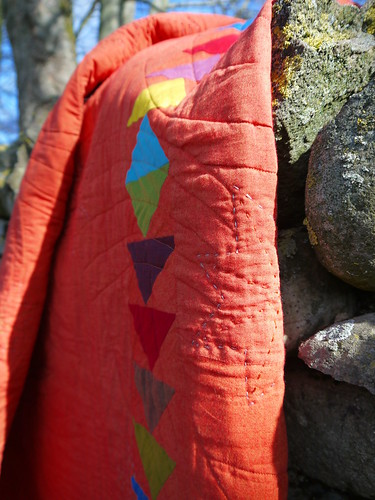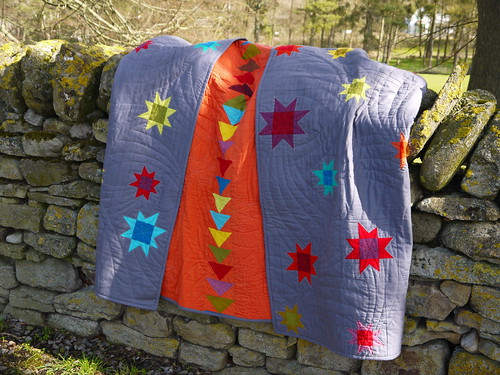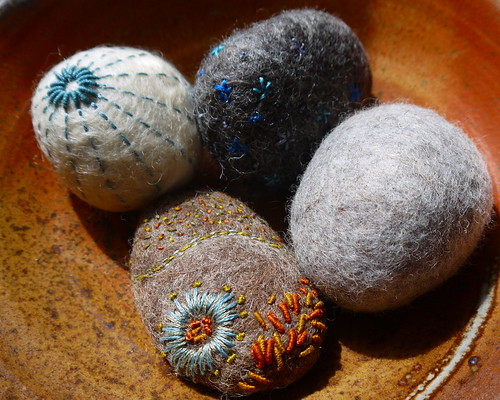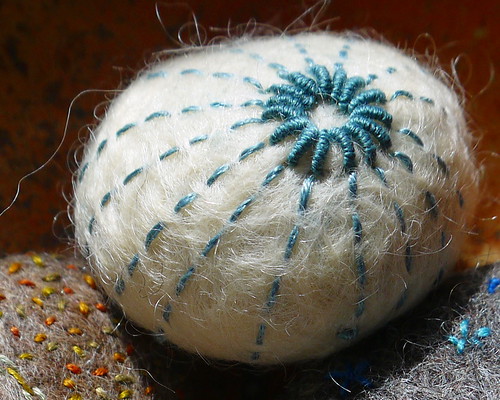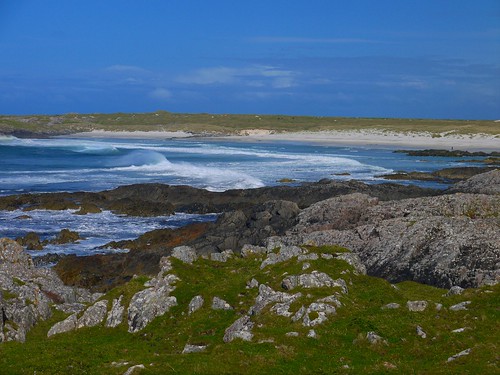
There's not much here, but there's beautiful beaches with beautiful pebbles and there's sheep's wool on the fences and beaches (I brought some fleece with me too, just in case). (If you're new to felted stones, see my original post for how I got inspired to make these).
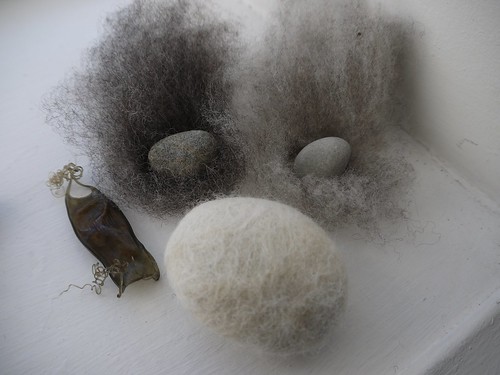
This white wool was from a beach at Hynish, in the south of the island. I've no idea what breed of sheep this is from! I washed it with hand-soap to remove the lanolin and as much of the dirt as I could and teased it out, then let it dry. Once it was dry I teased it out a bit more, then made it into a layer I could wrap round a pebble. It wasn't as easy as using the combed fleece, because in that all the fibres lie in the same direction and it's easier to wrap it snugly round the pebble. However, I managed, and felted it as usual - the wool did go very baggy during the felting but eventually formed a good and fairly even layer. (Also in the picture above are too small pebbles ready to be felted with wool from Weardale - I like their little explosive haircuts!).

This white wool has definitely formed felt, but it remains quite fuzzy. My best felting action cannot seem to get these surface fibres to knit in! I noticed the same thing when I used white fleece from my previous felt kit; other wool types seem to make denser, closer felt - but this has its own character.
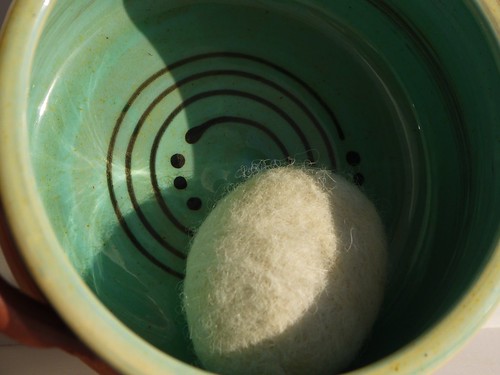
So here is a memento of our holiday - a pebble from Tiree, felted in wool from Tiree! And, in this picture, picture nestling in a lovely new dish from Tyrii pottery.
Hoping your weather is as lovely as ours up here x






